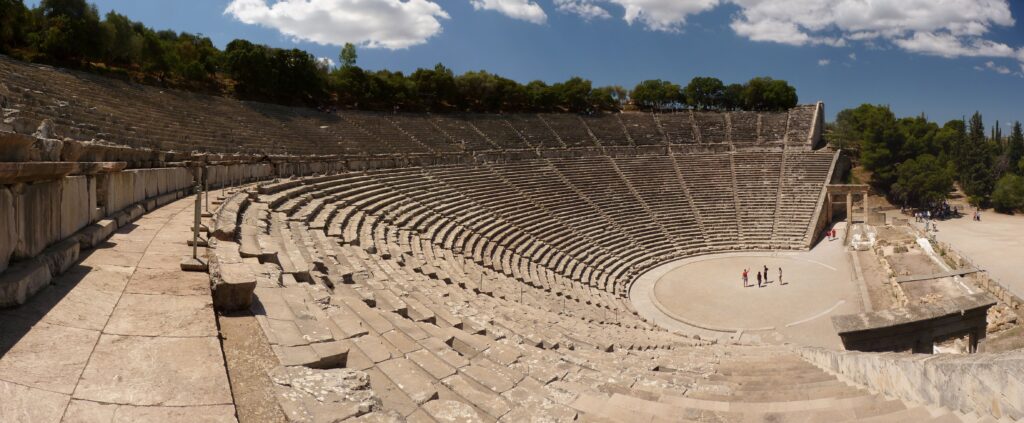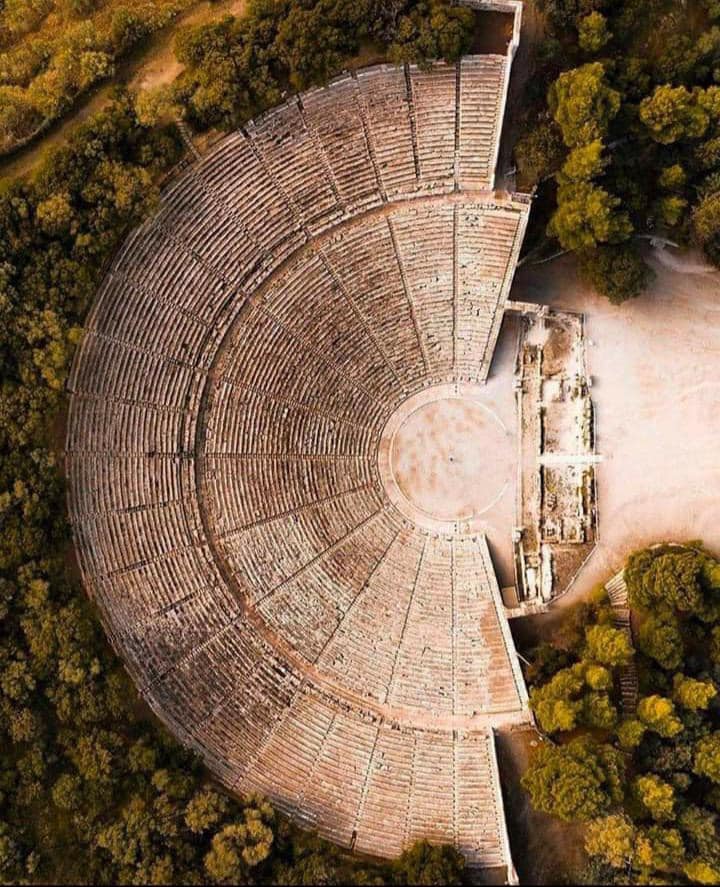The Theater in Epidauros
The theatre at Epidauros, also known as the Theatre of Epidauros, was a member of the 4th century BC in ancient Greece. The exact date of its construction is unknown, but the structure is believed to have been built between 340 and 330 BC. The theatre is located in the sanctuary of Asclepius in Epidauros, which was a well-known spa and place of worship for this Greek god of medicine. Today, the Theatre of Epidauros is on the agenda as one of the most important and best-preserved theatrical sites of the ancient world.

When was the Theater at Epidauros established?
Teatr w Epidauros, znany również jako Teatr Epidauros, został członkiem IV wieku pne w starożytnej Grecji. Dokładna data jego budowy nie jest znana, ale uważa się, że konstrukcja została zbudowana między 340 a 330 pne. Teatr mieści się w sanktuarium Asklepiosa w Epidauros, które było znanem uzdrowiskiem i miejscem kultu tego greckiego boga medycyny. Dziś Teatr Epidauros jest programem za jedno z najważniejszych i najlepiej zachowanych miejsc teatralnych starożytnego świata.

Architecture and acoustics of the theater
Teatr w Epidauros słynie z rozwojem akustyki. Jest to jeden z najlepszych zachowanych i najskuteczniejszych atrakcji antycznych teatrów pod względem jakości dźwięku.
Dzięki swojej konstrukcji i cechom geometrii teatru osiągającego projekcję dźwięku. Naturalna akustyka teatru sprawia, że nawet najcichsze dźwięki i słowa są słyszane przez całą widownię, nawet w ostatnich rzędach. Nawet szept można łatwo zrozumieć na scenie.
Podstawowym wyposażeniem akustyki teatru w Epidauros jest jego architektura. Teatr stał się na zboczu wzgórza, a półkolisty kształt widowni z łukowatymi rzędami siedzeń pozwolił na równomierne zwiększenie dźwięku. Ponadto dodatkowe i miejsca do wykonania są wykonane z materiałów dźwiękochłonnych, co pomaga optymalnie odbijać i rozdzielać dźwięk.
Inżynierowie budujący teatr są również świadomi właściwości dźwiękowych składników. Kamienie do budowy zostały starannie dobrane pod kątem właściwości akustycznych, aby wykorzystać propagację dźwięku.
Dzięki temu w teatrze w Epidauros każde słowo, dźwięk muzyczny czy efekt dźwiękowy jest dobrze słyszalne i rozumiane przez publiczność, właściwe od miejsca, w którym siedzą. Czyni do teatru niezwykle prostego pochodzenia starożytnej greckiej architektury teatralnej i doskonałego wykonania akustyki.

Plays staged contemporaneously at the Theatre
The theater in Epidauros is still used today as a venue for performances of plays by ancient playwrights. Modern performances at the theater in Epidauros are based on ancient Greek texts of tragedy and comedy.
In reconstructing performances of ancient plays, it tries to preserve as many original elements as possible. Although we are not completely sure exactly how they were staged in antiquity, the plays are adapted in a way that reflects their original form and spirit.
At the theater in Epidauros, plays by ancient playwrights are often presented on an open stage, as they were in ancient Greece. Actors often wear traditional costumes and masks, which was common in ancient Greek theater.
The chorus is also an important part of the performances. The chorus, consisting of a group of actors, plays an important role in narrating and commenting on the events on stage. Their singing, dancing and movement are an integral part of the show.
In the case of the theater in Epidauros, the excellent acoustics contribute to bringing the performances to life. The sounds of speech, singing and music spread with ease and clarity, allowing the entire audience to enjoy the full artistic experience.

How has the theater at Epidauros been so well preserved until the present day?
The theater at Epidauros has survived to the present day mainly due to several factors that contributed to its excellent preservation:
Secluded location: Epidaurus, where the theater is located, was a relatively isolated place in antiquity. This meant that the theater avoided much of the destruction and conflict that occurred in other regions of Greece. As a result, it was not subject to serious damage from warfare or natural disasters.
Stone foundations: The theater at Epidauros was built on solid stone foundations, which contributed to its durability. The stone blocks provided stability and protection against erosion and landslides.
Use of durable materials: Durable and high-quality materials such as marble and sandstone were used during the construction of the theater. These materials were resistant to weathering and changing conditions, which contributed to the long-term preservation of the building.
Reconstruction in Roman times: During the Roman period, the theater at Epidauros underwent some modifications and renovations that may have contributed to its preservation. Among other things, a marble facade was added, which may have protected the structure from damage.
Archaeological interest and preservation: The theater at Epidauros has been of interest to researchers and cultural enthusiasts since the 19th century. Archaeological discoveries and restoration work have contributed to the protection and preservation of the theater. Today it is managed by the Greek archaeological authorities and is protected as an important cultural heritage.
Thanks to these factors, the theater at Epidauros has survived in excellent condition to the present day, allowing us to enjoy its beauty and the unique atmosphere of ancient theatrical performances.


